Chicken noodle soup is the ultimate comfort food, but we’ve taken it up a notch by adding a secret twist: ginger and garlic. These two simple ingredients bring out the absolute best flavor. There is something about a bowl of chicken noodle soup that just makes you feel better and truly warms your soul. Everything comes together in less than an hour, making it a great weeknight dinner. Whether you’re craving the traditional version or feeling like something creamier, this recipe is designed to fit your comfort food mood.
Don’t miss the slow cooker version of our chicken noodle soup to add to your crockpot rotation.
Why Our Recipe
- Our secret? We add ginger and garlic for the absolute best flavor!
- Classic version or creamy option to fit your comfort food mood!
- Use dried or frozen egg noodles or even try your hand at homemade.
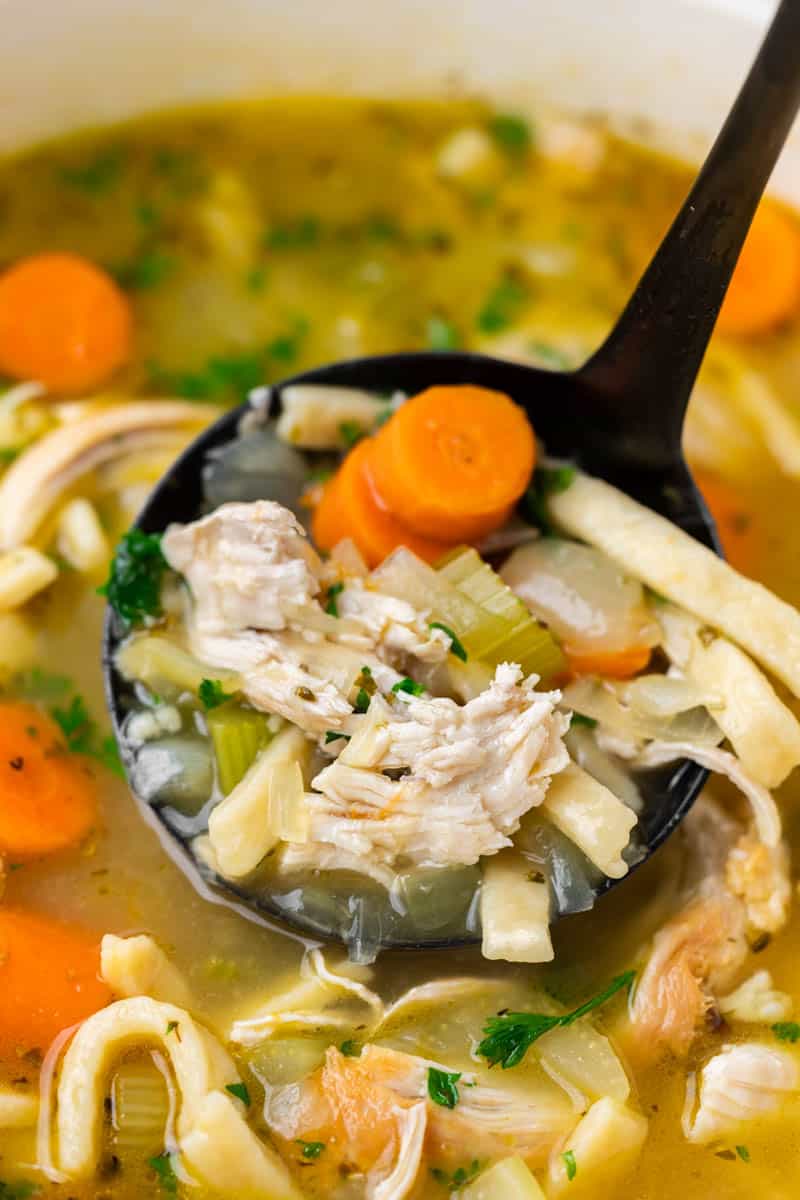
You can customize your chicken noodle soup even further by using dried, frozen, or homemade egg noodles. Want to add extra protein? We love adding frozen peas to our soup! And if you’re short on time, rotisserie chicken is a great shortcut to get dinner on the table fast. We bet you anything your family will be coming back for seconds and thirds of this delicious soup.
Ingredient Notes
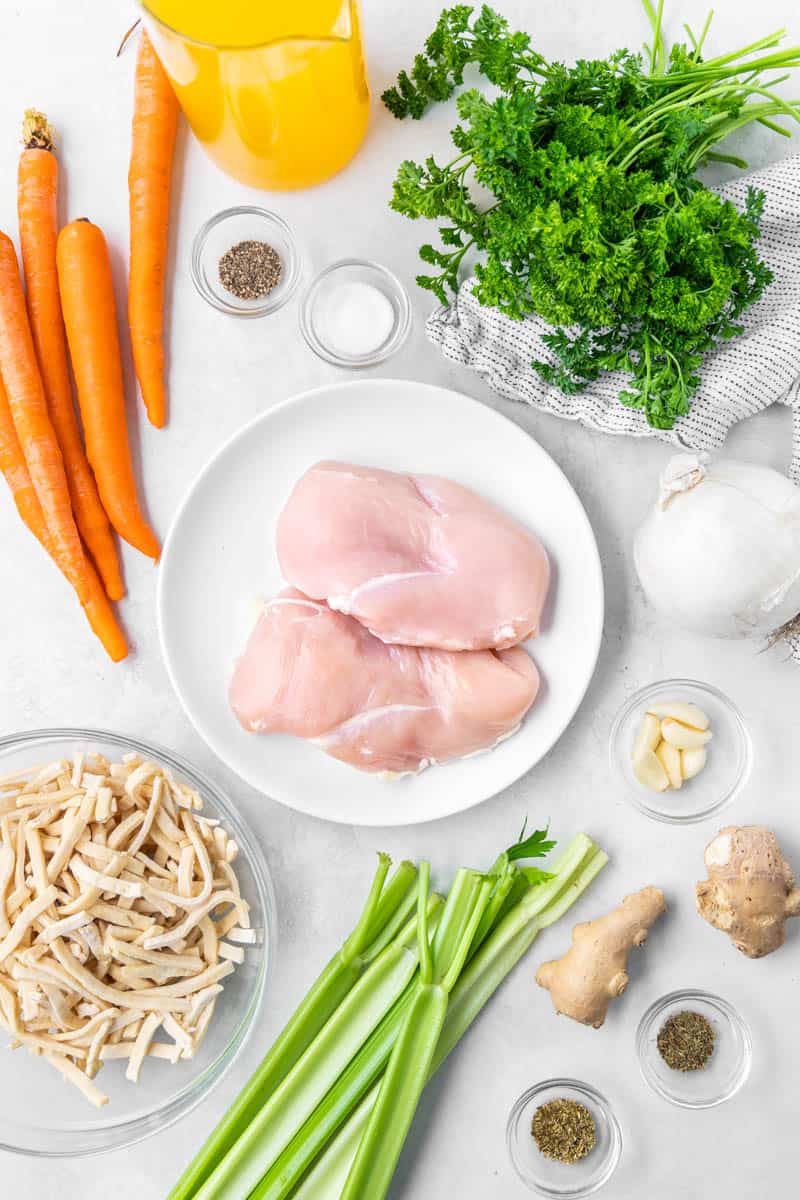
- Chicken Breasts: Boneless, skinless chicken breasts are ideal for this recipe. If you’re pressed for time, feel free to substitute with 1 1/2 to 2 cups of pre-cooked chicken, such as rotisserie chicken or leftovers.
- Olive Oil: If you’re out of olive oil, you can substitute with another neutral cooking oil like vegetable or avocado oil.
- Carrots & Celery: You’ll need about 3 medium carrots and 4 celery ribs, sliced thinly for even cooking.
- White Onion: You can also use yellow or sweet onion.
- Ginger: Freshly grated ginger brings a warm flavor. Substitute with 1 teaspoon of dried ginger.
- Garlic: Fresh garlic is recommended for best flavor, but jarred or frozen minced garlic works as well.
- Chicken Broth: Opt for low-sodium chicken broth so you can adjust the salt to your preference throughout the cooking process. If you really want a special treat, try making your own chicken stock.
- Egg Noodles: You can use dried, frozen, or even homemade egg noodles. Dried noodles cook in about 8–10 minutes, while frozen will take a bit longer. If making homemade, add them towards the end to prevent overcooking.
- Fresh Parsley: Stirring in freshly chopped parsley at the end adds brightness and freshness to the soup. If using dried parsley, substitute with 1 tablespoon.
- Cream (Optional Variation): A little heavy cream makes for a deliciously more indulgent chicken noodle soup. You can also use half and half.
Egg Noodle Options
When it comes to egg noodles, you’ve got options!
Dried Egg Noodles: These are the most convenient and widely available option. They cook quickly—usually in about 8 to 10 minutes—and hold up well in soups without becoming too soft. You’ll often find these in the pasta or soup aisle of your grocery store.
Frozen Egg Noodles: Frozen egg noodles tend to have a thicker texture and a more homemade feel. They may take a little longer to cook (typically 10 to 12 minutes), but they give your soup a hearty, comforting vibe. Look for these in the freezer section, often near frozen vegetables or doughs.
Homemade Egg Noodles: If you have the time, homemade egg noodles are an excellent option. They cook quickly, so be sure to add them towards the end of the cooking process to avoid overcooking. Homemade noodles can be made ahead and frozen for future use.
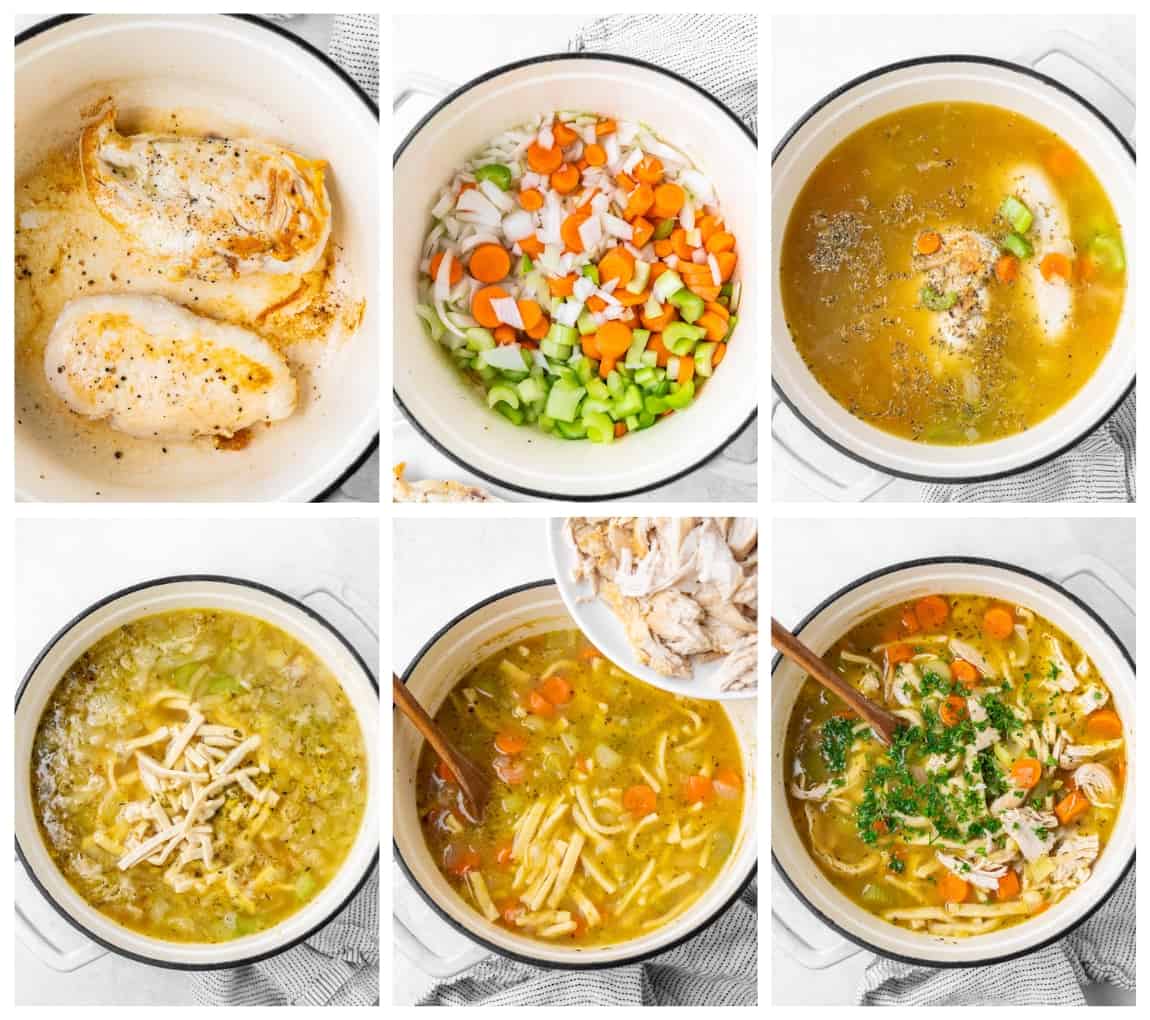
More Chicken Options
Rotisserie Chicken: If you’re in a hurry, rotisserie chicken is a fantastic time-saver. Since rotisserie chickens are usually a loss leader for grocery stores, it’s a money-saver too! Simply shred about 1 1/2 to 2 cups of pre-cooked chicken and stir it in during the last few minutes of cooking.
Leftover Chicken: Got leftover chicken from a previous meal? Whether it’s grilled, baked, or roasted, you can easily shred it and add it to your soup. This is a great way to minimize waste and give new life to leftovers.
Chicken Thighs: If you prefer dark meat, boneless chicken thighs are a tasty alternative to chicken breasts. They add a richer flavor to the soup and tend to stay more tender and juicy. Sear and cook them just as you would chicken breasts.
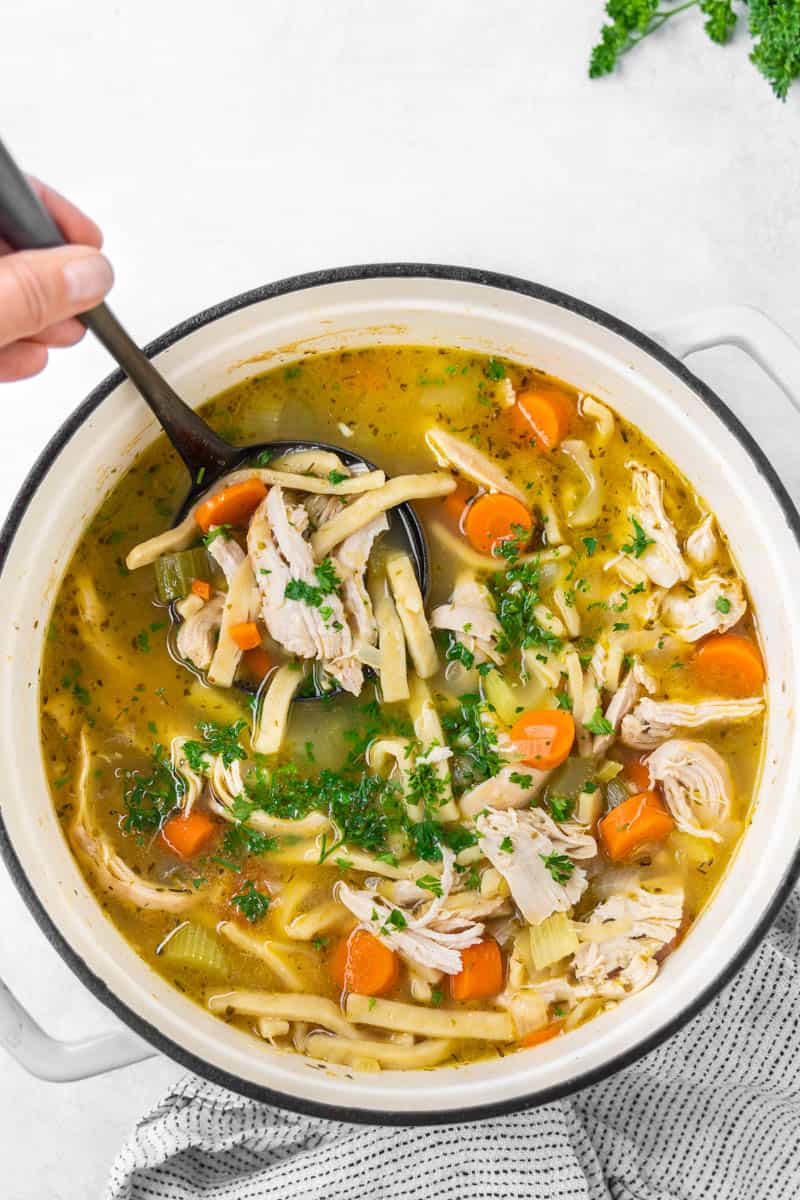
Variations
Creamy Chicken Noodle Soup: For a creamy indulgent twist, stir in 2 cups of heavy cream during the last few minutes of cooking. It adds a much more luxurious feel to the classic brothy soup.
Boost the Protein: Want to add extra protein to your soup? Toss in 1 cup of frozen peas while you shred the chicken. The peas will heat through while the soup finishes cooking, adding a subtle sweetness and a pop of color.
Add Some Greens: Boost up the nutrition and add a little color. Stir in a couple handfuls of baby spinach during the last few minutes of cooking and allow them to wilt.
Lemony Twist: Squeeze fresh lemon juice into the soup before serving. The acidity brightens up the flavors and pairs nicely with the ginger and garlic. The juice from 1 lemon will do which is about 1/4 cup.
Storage & Reheating Instructions
Refrigerate leftovers in an airtight container in the refrigerator for up to 3 days. The noodles may absorb some of the broth, so you may want to add a splash of extra chicken broth when reheating to keep it soupy.
Freeze the cooled soup in a freezer-safe container or resealable freezer bag, leaving space at the top for expansion. Freeze for up to 3 months. When you’re ready to enjoy, thaw the soup in the refrigerator overnight, then reheat.
Reheat on the stove over medium heat on the stovetop, stirring occasionally, until warmed through. If needed, add a bit of extra broth to thin it out, especially if the noodles have absorbed some liquid.
Reheat in the microwave in a microwave-safe dish. Heat in 30-second intervals, stirring in between for even heating, until heated through.
More comfort food soup recipes…
Watch the video below where Rachel will walk you through every step of this recipe. Sometimes it helps to have a visual, and we’ve always got you covered with our cooking show. You can find the complete collection of recipes on YouTube, our Facebook Page, or right here on our website with their corresponding recipes.
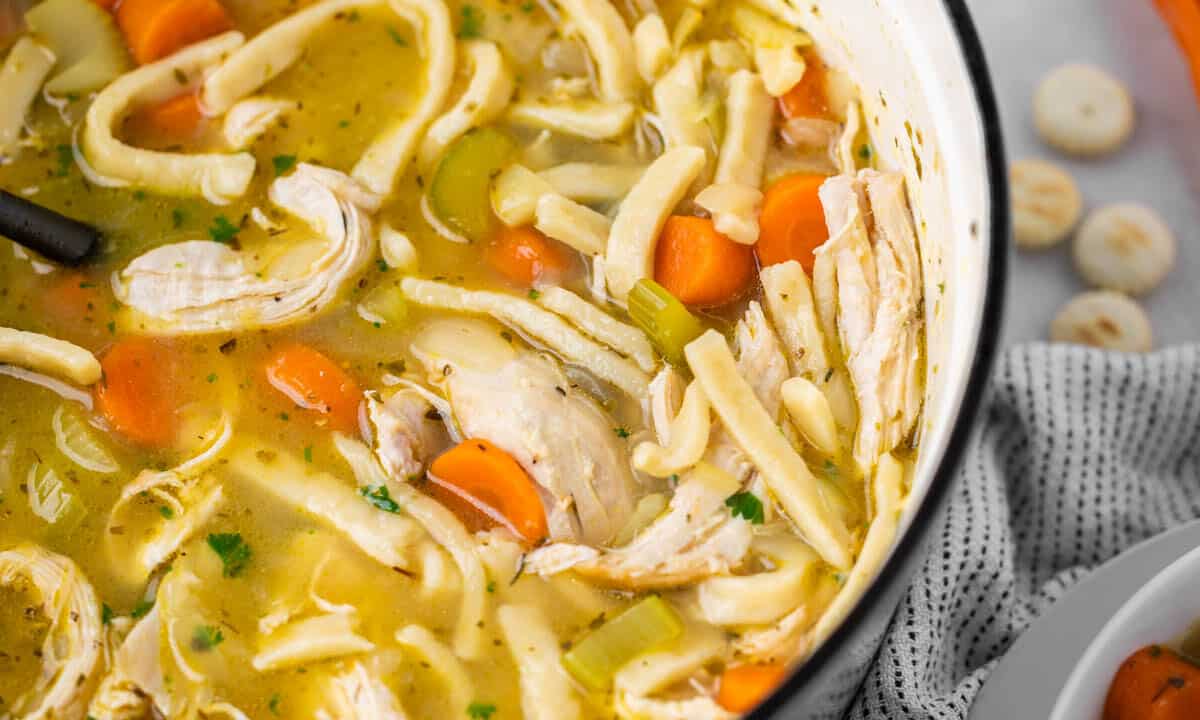
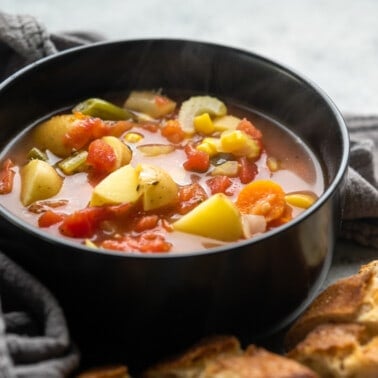
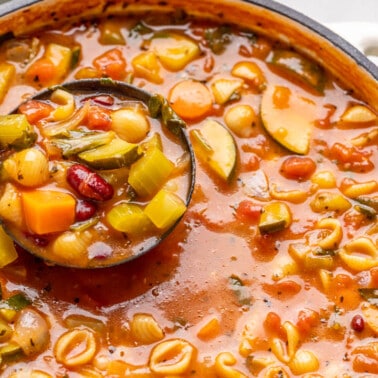
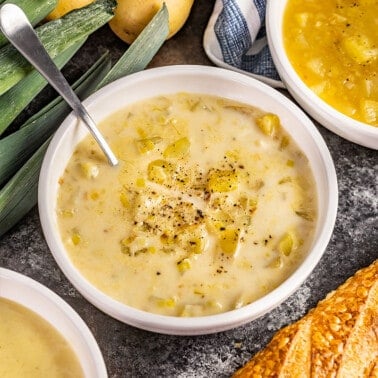
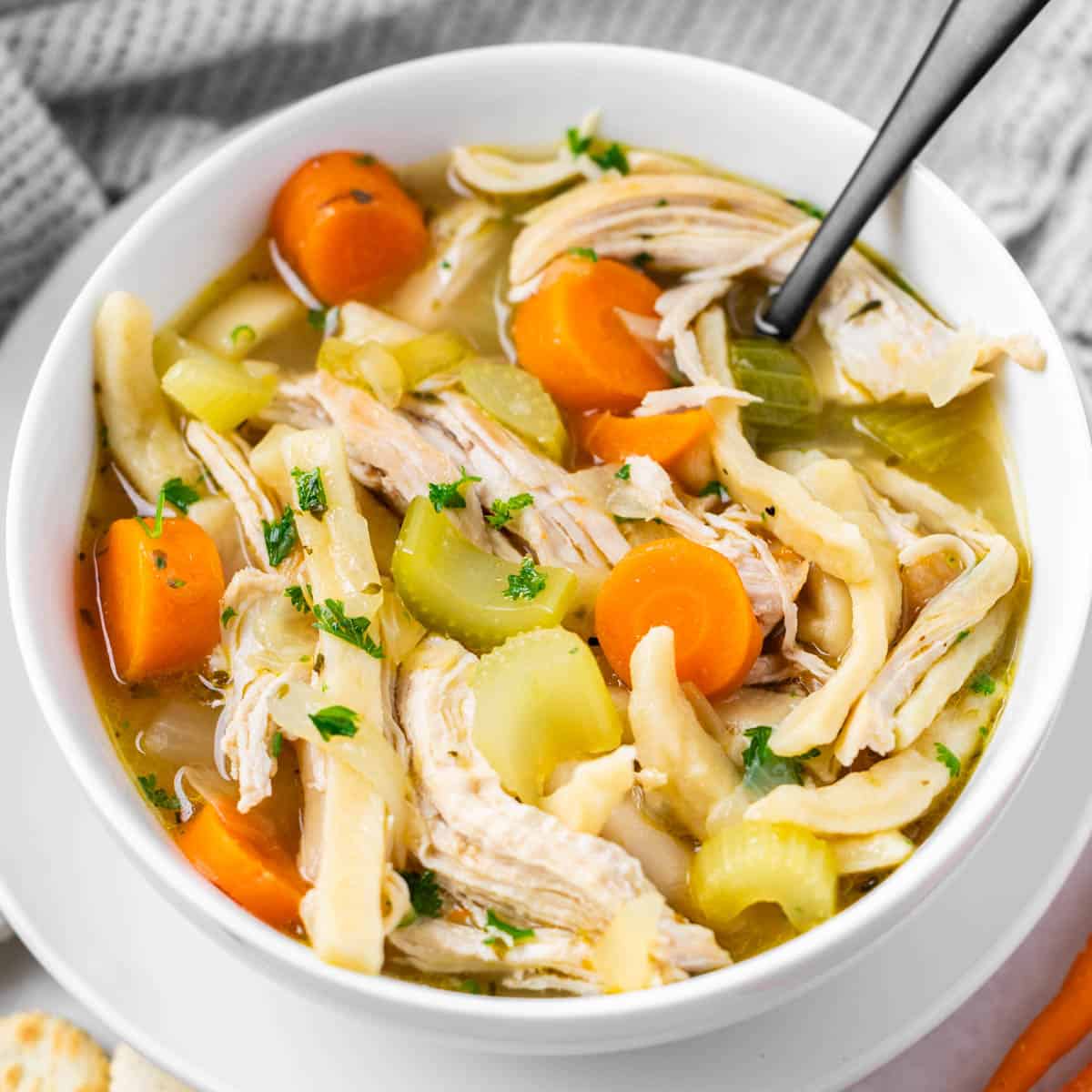
I make this recipe at least once a fortnight, it has literally often been the only thing my teen with a chronic illness feels like eating, so I thank you from the bottom of my heart! It’s the ginger that does it!
You are so welcome!
Made this recipe today. I’ve always been afraid to make chicken noodle soup. It’s did it and it was yummy. Adding to the recipe binder
Thank you for your wonderful recipes.
I have always been fascinated about food, and have loved to cook. But now I am pushing 86, I no longer have the stamina to cook elaborate meals. Your recipes are timely and basic. This old lady truly appreciates you and your recipes!
I do not usually put veggies in my chicken and noodles but am trying to add more into my diet. I loved the addition of ginger and garlic in the creamy chicken and rice soup so this sounded good too. Amazing!!! Definitely going to put this recipe in our family chat!!
Very close to the recipe I’ve used before. It is a delicious soup
Just made this and it is so delicious! Find myself using your site as my “ go to” site whenever I need a recipe. Thank you so much!
I make this frequently over the winter months. I do add a can of stewed tomatoes and A FEW DASHES OF KETCHUP. Makes all the difference. I also use Kluski noodles